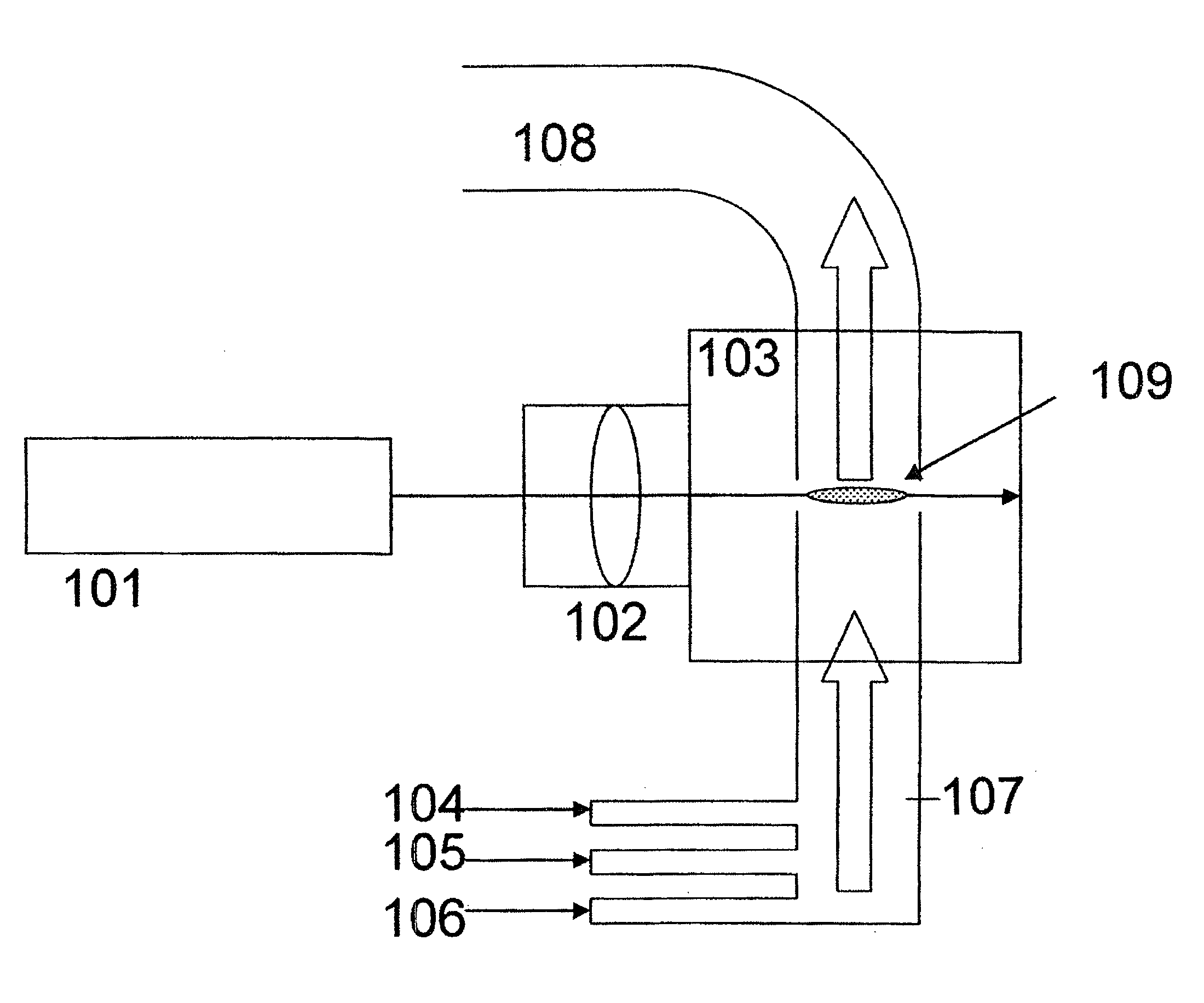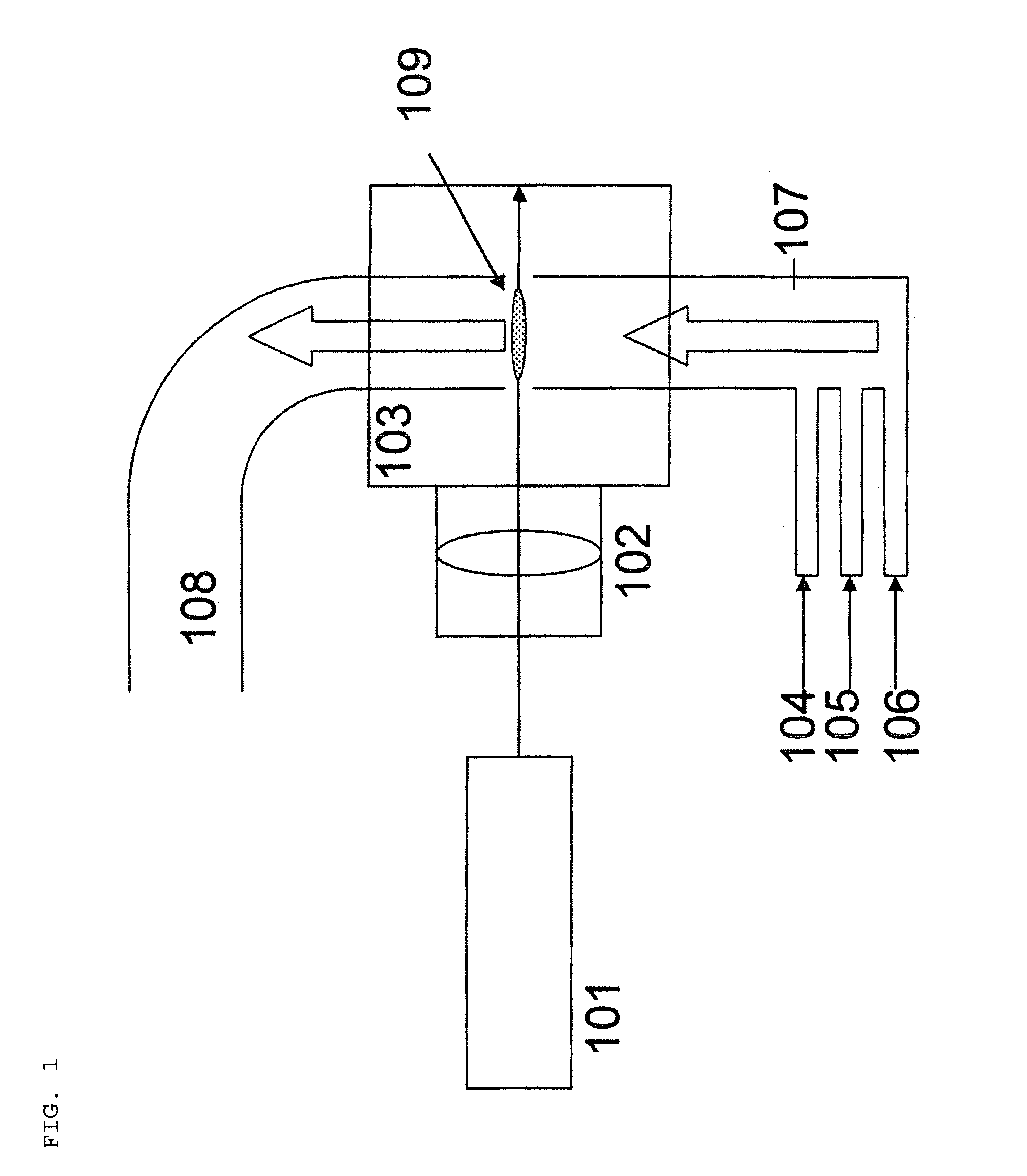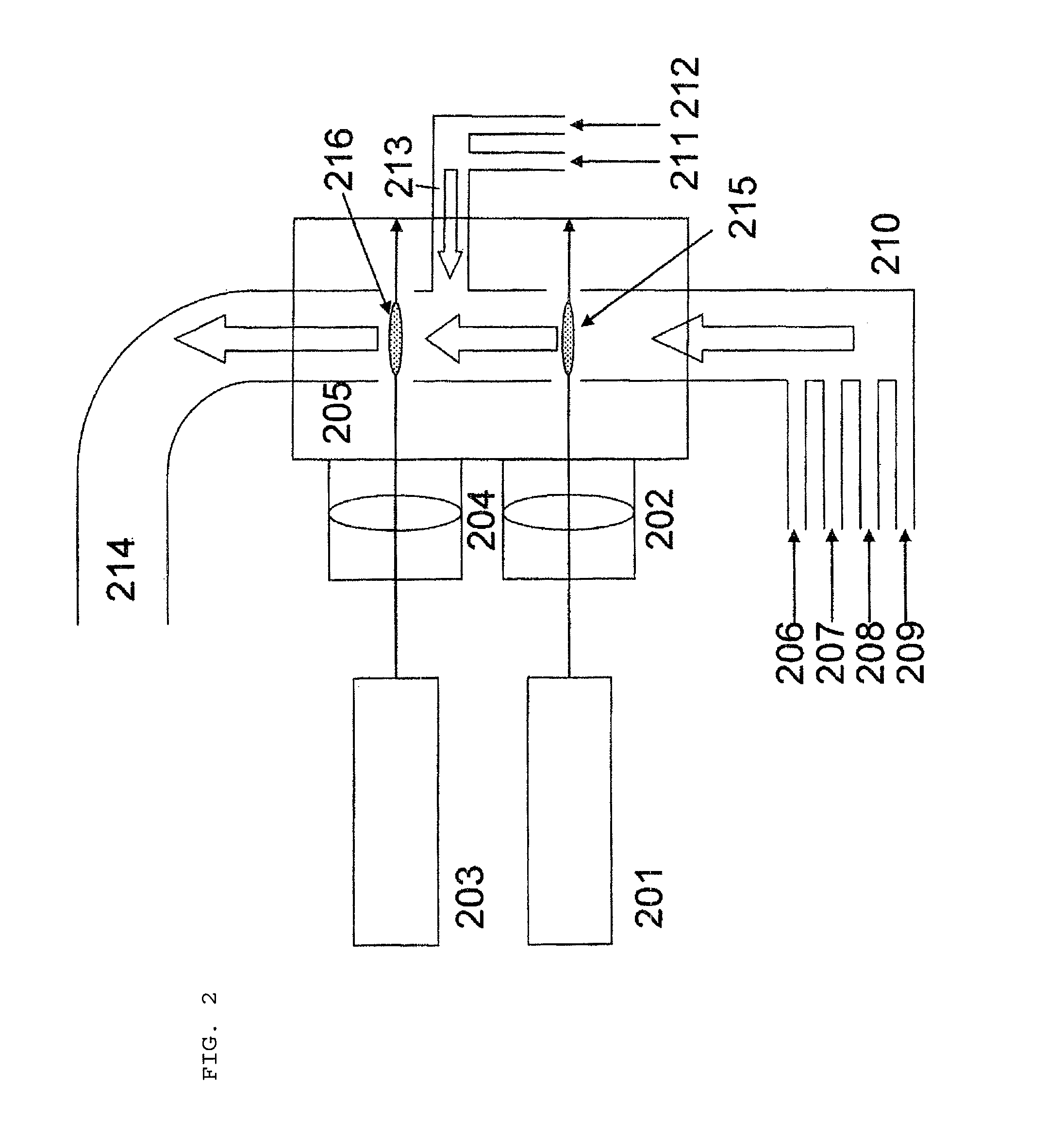Process for production and use of carbonitride mixture particles or oxycarbonitride mixture particles
a technology of carbonitride and mixture particles, which is applied in the direction of catalyst activation/preparation, chemical/physical processes, chemical vapor deposition coating, etc., can solve the problems of difficult processing of carbonitrides to different shapes in later steps, large particles obtained, and carbonitride obtained as powder. , to achieve the effect of uniform particle size distribution, excellent properties and uniform composition
- Summary
- Abstract
- Description
- Claims
- Application Information
AI Technical Summary
Benefits of technology
Problems solved by technology
Method used
Image
Examples
example 1
[0094]Carbonitride mixture particles were produced using a laser pyrolysis apparatus as illustrated in FIG. 1 under the following conditions. Into a 0.1 m3 volume chamber, there were fed 20000 sccm (sccm=standard cubic centimeter per minute) of nitrogen as a carrier gas preheated to 200° C., 1000 sccm of methane as a carbon source preheated to 200° C., 5000 sccm of ammonia as a nitrogen source preheated to 200° C., and 2 g (10.5 mmol) per minute of titanium tetrachloride as a metal compound material preheated to 200° C. The chamber pressure was 200 Torr.
[0095]The laser used was a CO2 laser, and the power was 1200 W. The laser light was focused to the reaction zone using a condensing lens. The titanium-containing carbonitride mixture particles generated at the reaction zone were collected through an outlet connected with a dry pump. The carbonitride mixture particles had an average particle diameter of 25 nm. The particle diameter distribution was σ=2 nm.
[0096]The sample obtained had...
example 2
[0097]Oxycarbonitride mixture particles were produced using a laser pyrolysis apparatus as illustrated in FIG. 2 under the following conditions. Into a 0.2 m3 volume chamber having two reaction zones, there were fed 30000 sccm of nitrogen as a carrier gas preheated to 200° C., 7000 sccm of ammonia as a nitrogen source preheated to 200° C., and 4 g (17.5 mmol) per minute of titanium ethoxide as a metal compound material preheated to 200° C.
[0098]Laser light was emitted from a CO2 laser at a power of 1200 W and was focused to the first reaction zone using a condensing lens.
[0099]Further, 10000 sccm of nitrogen as a carrier gas preheated to 200° C. and 1 g per minute of water as an oxygen source were supplied to the second reaction zone. Laser light was emitted from a CO2 laser at a power of 1100 W and was focused to the second reaction zone using a condensing lens.
[0100]The chamber pressure was 200 Torr.
[0101]The titanium-containing oxycarbonitride mixture particles generated at the s...
example 3
[0103]Oxycarbonitride mixture particles were produced using a laser pyrolysis apparatus as illustrated in FIG. 2 under the following conditions. Into a 0.2 m3 volume chamber having two reaction zones, there were fed 30000 sccm of nitrogen as a carrier gas preheated to 200° C., 21000 sccm of ammonia as a nitrogen source preheated to 200° C., and 6 g (18.9 mmol) per minute of niobium ethoxide as a metal compound material preheated to 200° C. Laser light was emitted from a CO2 laser at a power of 1200 W and was focused to the first reaction zone using a condensing lens.
[0104]Further, 10000 sccm of hydrogen as a carrier gas and 1 g per minute of water as an oxygen source were supplied to the second reaction zone. Laser light was emitted from a CO2 laser at a power of 1100 W and was focused to the second reaction zone using a condensing lens.
[0105]The chamber pressure was 200 Torr.
[0106]The niobium-containing oxycarbonitride mixture particles generated at the second reaction zone were co...
PUM
| Property | Measurement | Unit |
|---|---|---|
| particle diameter | aaaaa | aaaaa |
| size | aaaaa | aaaaa |
| particle diameters | aaaaa | aaaaa |
Abstract
Description
Claims
Application Information
 Login to View More
Login to View More - R&D
- Intellectual Property
- Life Sciences
- Materials
- Tech Scout
- Unparalleled Data Quality
- Higher Quality Content
- 60% Fewer Hallucinations
Browse by: Latest US Patents, China's latest patents, Technical Efficacy Thesaurus, Application Domain, Technology Topic, Popular Technical Reports.
© 2025 PatSnap. All rights reserved.Legal|Privacy policy|Modern Slavery Act Transparency Statement|Sitemap|About US| Contact US: help@patsnap.com



